
UnReal World is a unique low-fantasy roguelike game set in the far north during the late Iron-Age.
The world of the game is highly realistic, rich with historical atmosphere and
emphasized on survival in the harsh ancient wilderness.

UnReal World is a unique low-fantasy roguelike game set in the far north during the late Iron-Age.
The world of the game is highly realistic, rich with historical atmosphere and
emphasized on survival in the harsh ancient wilderness.
Development history of UnReal World RPGThe very first version of UnReal World was released in 1992. Since then we've seen dozens of UrW releases and still there is no end in sight to working with the next generations of the game. Here you can find UrW development history since 1992 - and to be continued.Yearly release pace is noted by line of hyphens ------------ representing twelve months of the year, R meaning release on the given month. Few characteristic features, curiosities or important goals for the annual releases are listed in addition to development overview for each year. 1992Version 1.00bThis multi-level dungeon exploration adventure was actually meant to be just one campaign in the world of Ankhyrnia. The game, set of game rules and details were already designed to allow complex wilderness campaigns, and the idea was not only to develope the game, but also to release external campaigns which could be loaded into this roguelike engine and world. Focus of development wasn't only in dungeons, but also in open-ended game world to explore. But dungeon exploration roguelike it was...and being a "showcase" version, there was crazy amount of features and easter eggs from all around the game world poured into caves of doom - in somewhat tongue-in-cheek flavour. 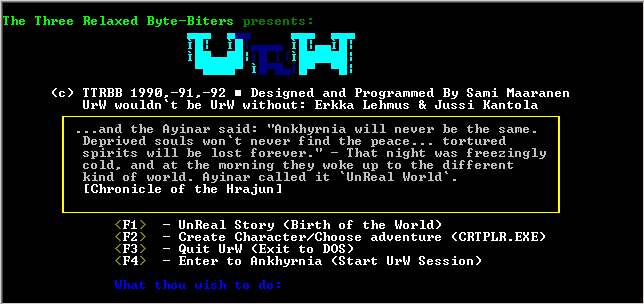
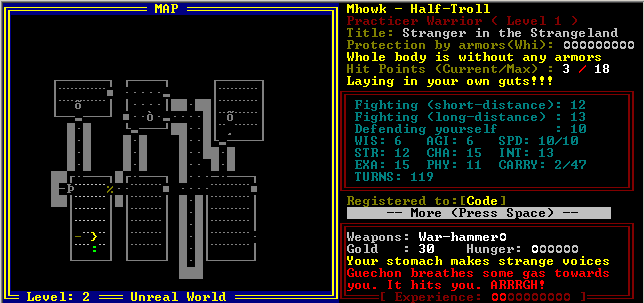
Few features that may appear strangely familiar:
Remember to view readme file included in the archive! Download UrW 1.00B - full version 19931994Versions 2.00b - 2.03Version 2.00b was completely re-written and brought the character out from the dungeons and into the wilderness. World of the game was still medieval fantasy world, but an unnamed one. Multi-level dungeons existed but importance of travelling on wilderness map was already big part of the game. There were mountains, forests, lakes and villages here and there. Very little was told about the world itself, and there was no big plot to follow. Wilderness map and villages were predefined, but dungeons and local terrains maps randomized. From this version on UrW has been completely open-ended. 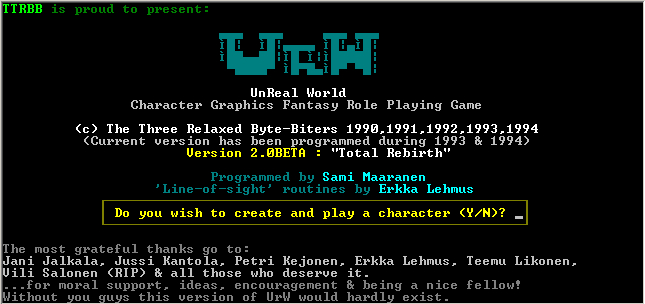
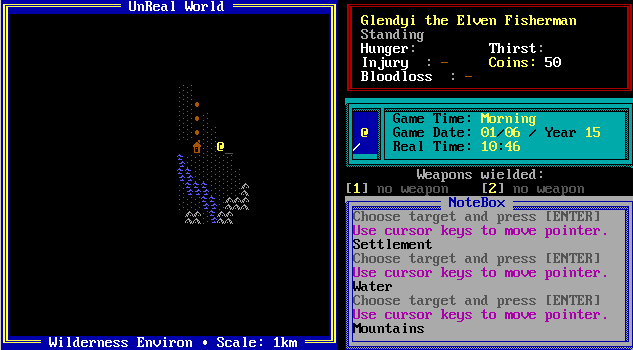
Early, but still characteristic features:
1995Versions 2.04 - 2.08World of the game was still unnamed and undescribed. There was medieval touch to it, but in mundane way. Behind the scenes it had become clear that the game takes place in ancient northern country. Predefined wilderness map and fixed villages were ruled out, and the whole world was made random. Lots of attention was payed on generating the wilderness, villages and local terrain in new and interesting way. Mushrooms, berries and other edible plants were added with their growing seasons and natural habitats taken into consideration. Selecting race (human, elf, orc, etc.) for player character was replaced by choosing one of the early cultures instead. Now it was possible to play only as human character. Multi-level dungeons, orcs, elves and various monsters still existed, but ruling out high-fantasy elements had started. 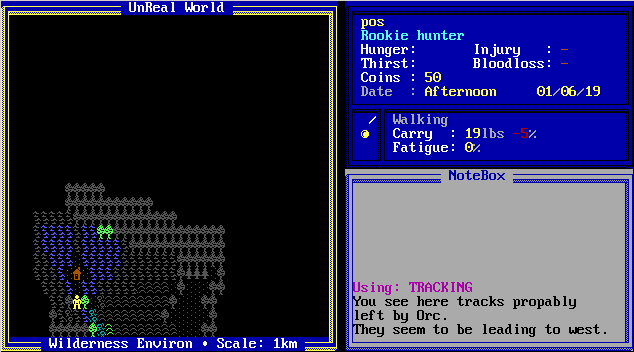
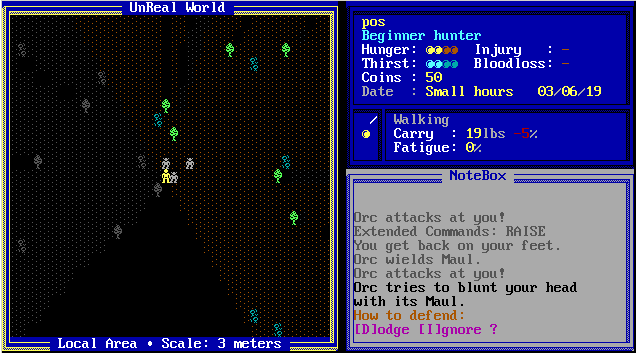
1996Versions 2.09 - 2.11R----R----R-A year of big turning point and epochal versions. Earnestly and secretly cherished ideas about fenno-ugrian fantasy were revealed and released. High-fantasy monsters were replaced by animals, item assortment was biased towards everyday tools, villages grew smaller and less medieval - and finally, cultures were replaced with the first four cultures of Unreal World. Game encyclopedia was written to enlighten the player what the game was about; hunting, fishing, trading, wilderness survival, cultural elements, everyday life and fighting against the Njerpezit. The legend about origin of the world and how it became unreal was written - and still is the same. The game also started to turn graphical step by step. 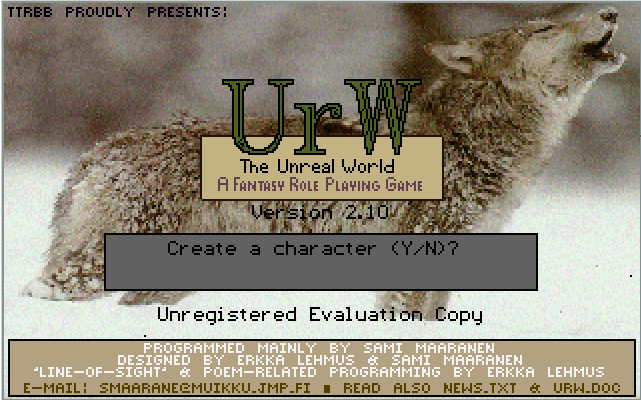
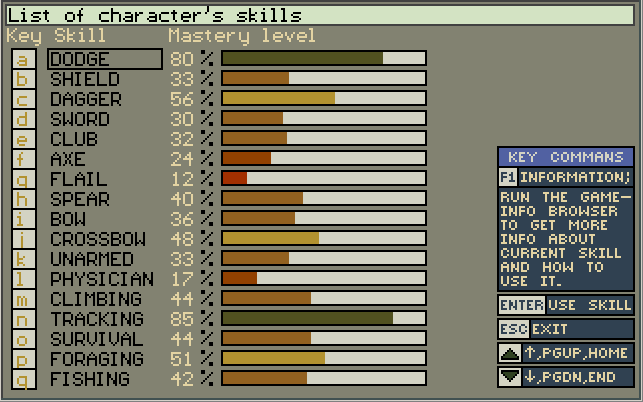
1997Versions 2.12 - 2.14R-----R----RThe game turned more graphical version by version, and finally the first completely graphical version was released. Sound effects and music were also added step by step. In addition to audiovisual overhaul, the game not only started to look and sound like an ancient, northern country - but it also started to truly feel like one. Rest of the cultures as we know them now were added. Villages and NPCs were updated to match their culture. Random world and terrain generation was completely overhauled to better represent the northern flora and fauna. Rudimentary stage of rituals and the spirit world was introduced. 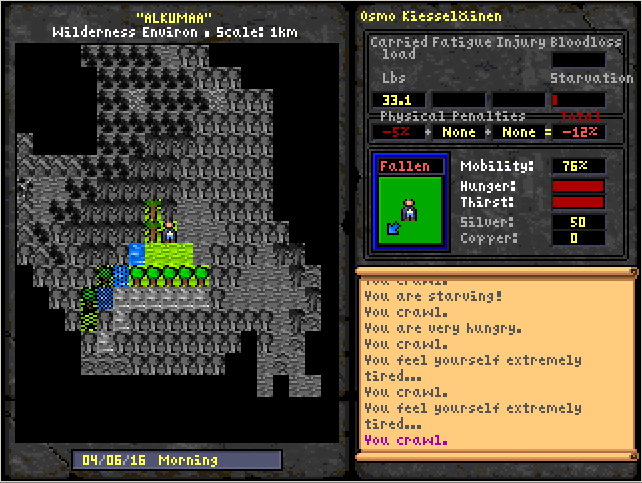
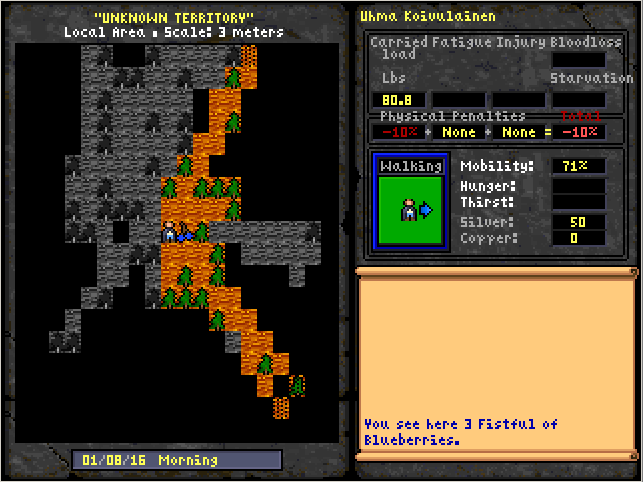
1998Versions 2.15 - 2.20-----R---R--The year of massive rewriting and fundamental additions such as crafting your own items. Many core elements were rewritten to satisfy the developer and allow the game to grow match the size of visions behind. Graphics engine was rewritten, resolution was doubled and all the screens and tiles were redrawn. Random world generator was rewritten to feature a bigger world and more detailed terrain. Local (zoomed-in) maps got overhauled too featuring one especially crucial addition: previously zoomed-in maps were forgotten upon zooming out, but now the game permanently tracked every item, creature and detail in the world for as long as the game continued. 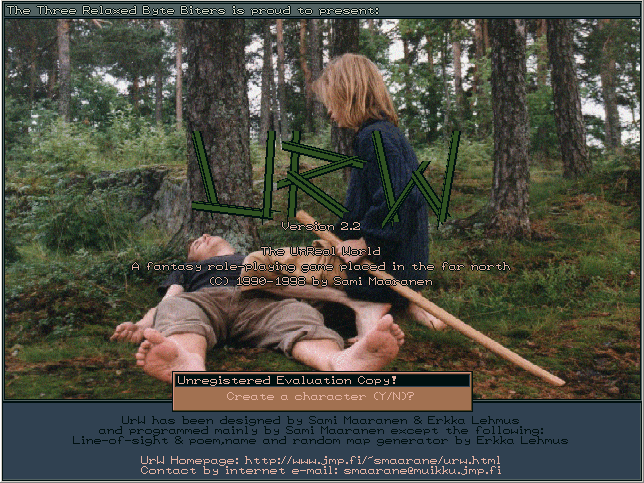
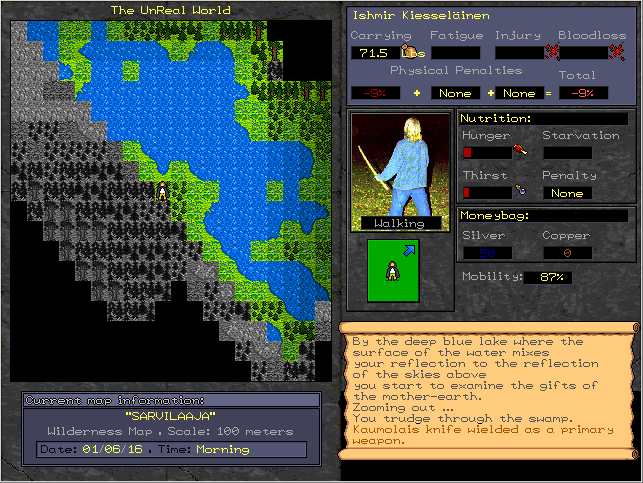
1999Version 2.30 and CD-ROM edition for libraries---R--------So far UrW had been an evergrowing DOS-game having to deal with memory limitations and Windows compatibility issues. To break this barrier the game was brought from Borland compiler to Watcom DOS/4GW and the first Windows friendly (32-bit, protected mode) version was released. This was a crucial and mandatory step as now there was virtually unlimited amount of memory to access easily. There was also graphical revolution as the resolution was (once more) increased, lots of new graphics were added and general outlook of the game took a step towards its current form. Only one public version was released as rest of the year was spent to create CD-ROM library edition of UrW: "Rautakausi Nyt" ("Iron-age Now"). This library edition was originally ordered by one finnish library, but it was eventually distributed all over the country. And now UrW, this strange and addictive northern roguelike, seemed to be not only entertaining but also culturally, historically and even educationally relevant game. 
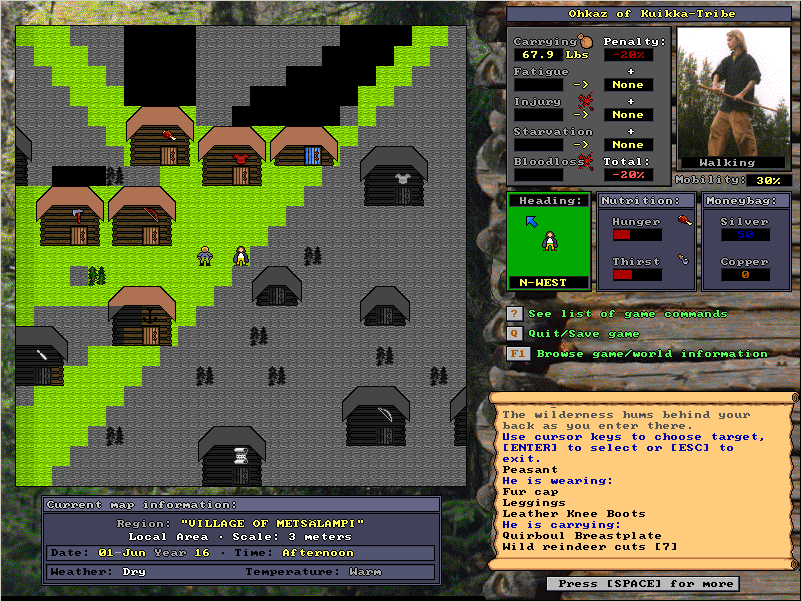
2000Version 2.40--R---------For the library edition CD-ROM lots of additional content was created; music, pictures, short films. This audiovisual material was now used to update graphics, music and sounds of the game - it became rough, harsh, primitive and mystical. Making UrW short films and re-enacting the game had been very inspiring. Bushcrafting and wilderness adventures in real life weren't new thing at all, but the actual programming and concrete feeling of life behind the game now became inseparable. From this version on, more and more game features have been experienced, lived or tested for real. There was new a millenium, a new era in development, and newly found urge to dive deeper and deeper into cultural roots of ancient finns - both personally and in the game. Few unsatisfactory elements that didn't fit the setting still existed: mountain goats (very tough beasts), monetary system, shops, written works, and assortment of "civilized" items. One version was released with additions to nearly every key element of the game; new skills, new rituals, new craftable items, new recipes and so on. Then the doors of development chambers were shut and intense coding started to free the people of Unreal World from money, shops, reading, writing and abundant imported goods... 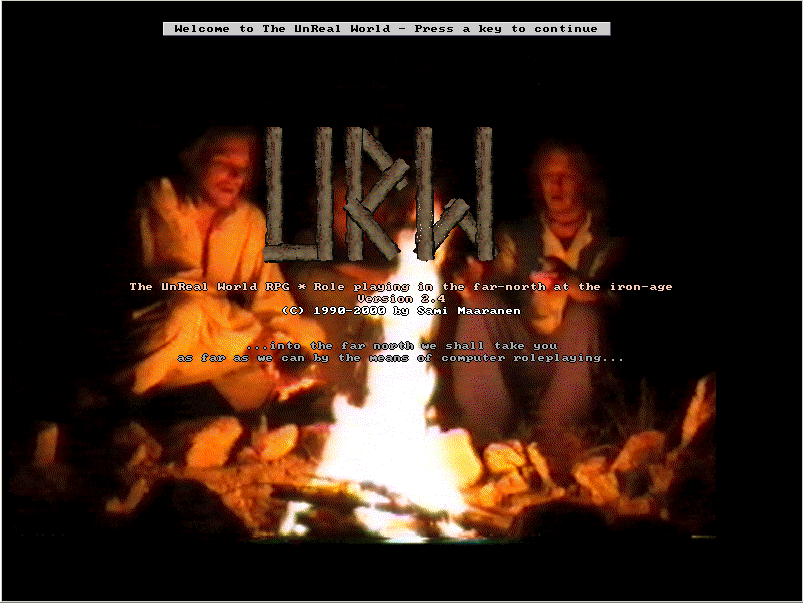
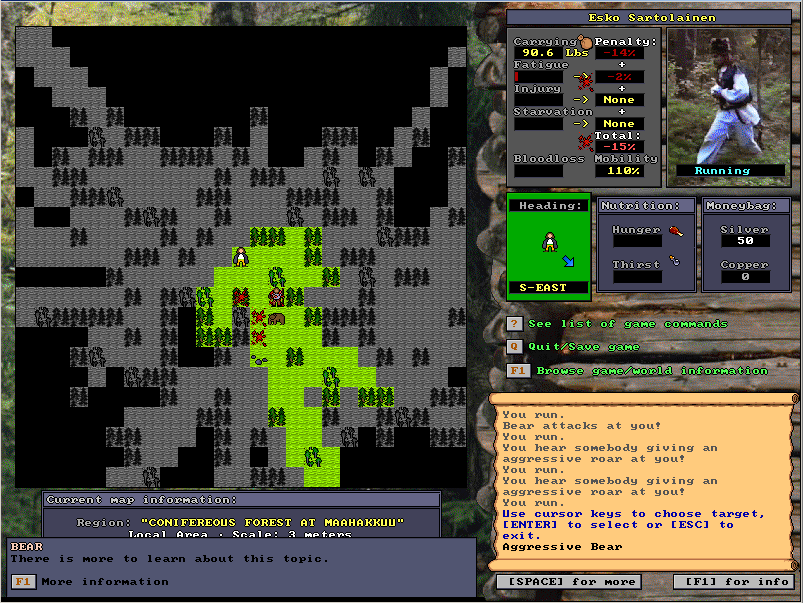
2001Versions 2.50 - 2.60--R--------RYet another epochal versions which were very satisfying also from the developers' point of view. NPCs became traditionally dressed and linen, nettle, woollen and birch-bark clothing appeared. The last big chances to make all the items, NPCs and cultural structure to fit into iron-age setting were accomplished. People of the unreal world now appeared pleasantly uncivilized foresters who lived of the land being watched over by the spirits of the nature. Most important and fundamental change was ruling out monetary system. Overal village architecture and building types were also overhauled, as shops and excess amount of items to purchase became less dominant. And as there was no monetary system anymore, all the game features related to self-sustainability needed to be thought over and improved accordingly. Crafting, cookery, hideworking, trapping, hunting etc. were improved to the point where the player character now could practice truly self-sustainable lifestyle - except for agriculture. An important addition to manifest living on your own was the feature to construct wooden buildings. 
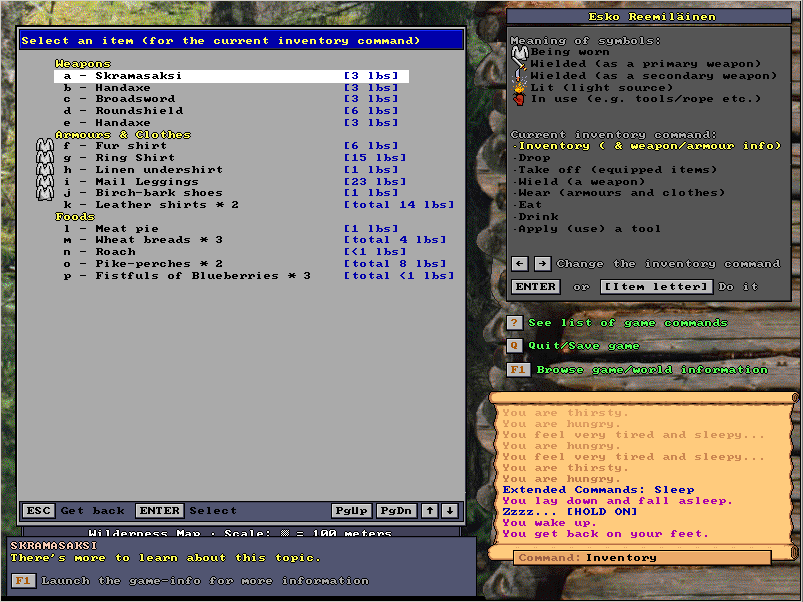
2002Version 2.70-----------RTen years had passed since the first release of UrW. Satisfying number of major goals were accomplished and world of the game finally existed very much like it had been dreamed to exists since 1995. In some sense the goal of creating fenno-ugrian, iron-age roguelike was "accomplished" - but naturally it had become clear that the traditional lifestyle and cultural roots of our ancestors offered an endless source for inspiration, imagination and development. What next? Wilderness survival had always been very important part of the game, but now the focus turned into interaction between human beings and social relationships. Talking to NPCs was improved in many ways, NPCs got lots of stories to tell and quests to offer - and most importantly, a feature to get married was added. (This scale of level of socializing was later removed to be introduced with more detail in the future) 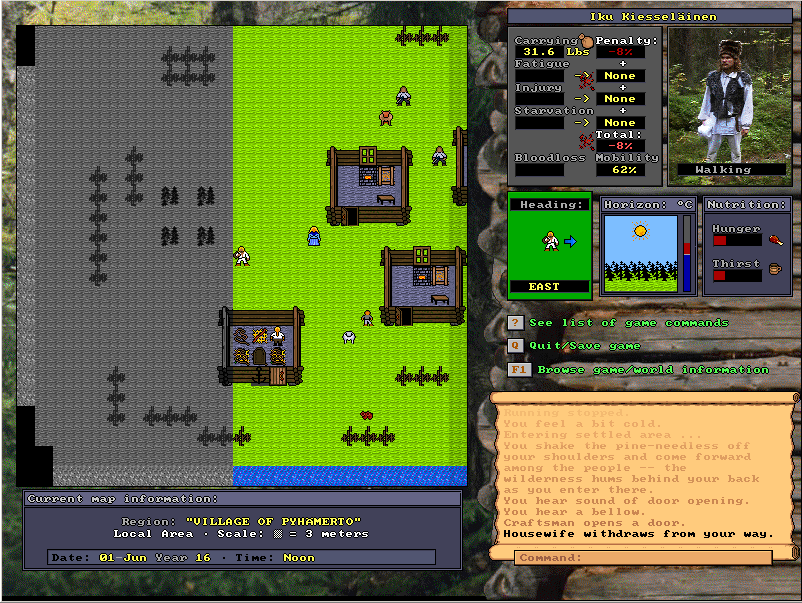
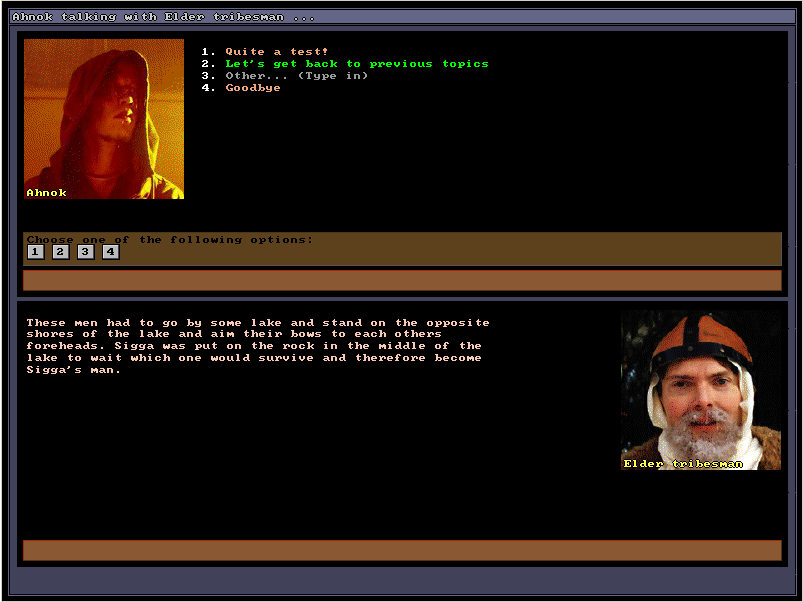
2003no release------------No release doesn't equal to no development. It just took 14 months to finish the next public release. 2004Version 2.80--R---------The game was about iron-age in the far north. Living of the land, hunting, fishing, crafting and building were core elements of the game. Social life was there; getting married, interacting with other human beings and also with the supernatural. But one important source of livelihood had been missing until now: agriculture. This version was clearly focused on agriculture, utilizing crops and preserving food. Life cycle of the plants was improved, cookery recipes were improved, and AGRICULTURE-skill now allowed the character to lead more settled lifestyle. 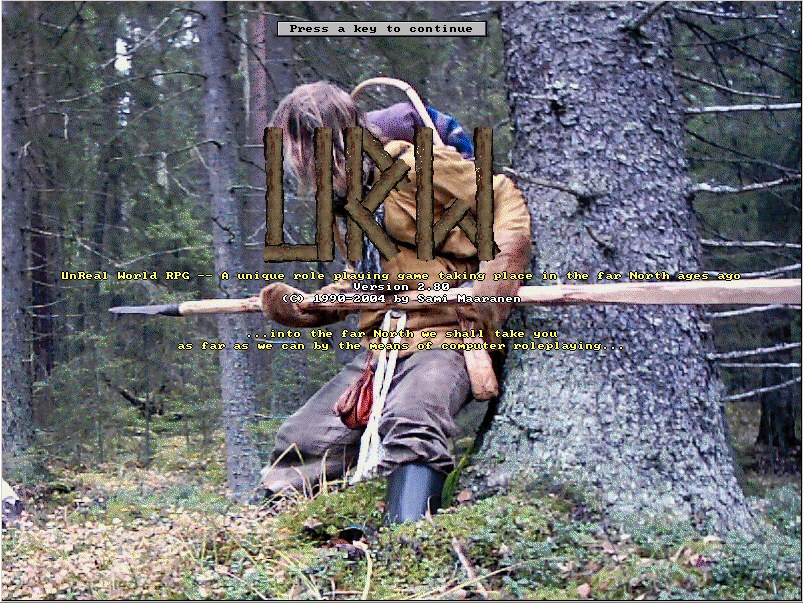
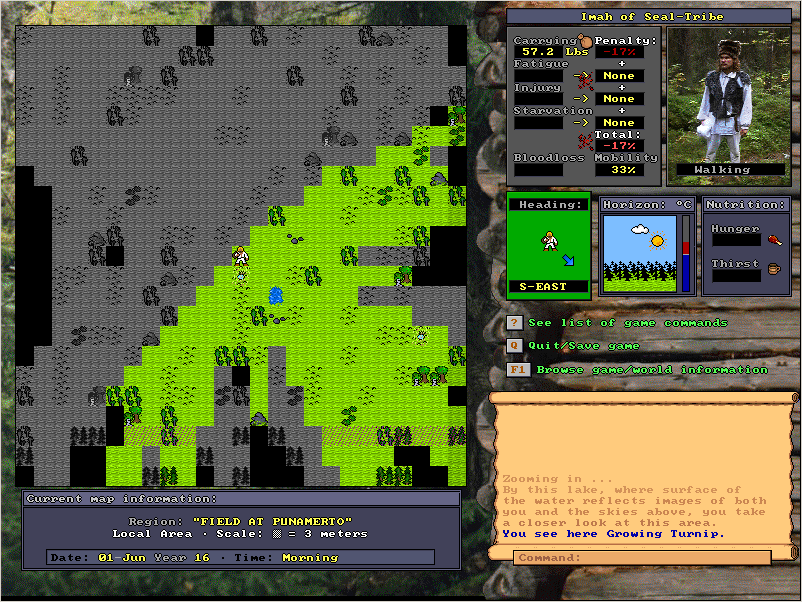
2005no release------------A massive architechture/porting leap was upon the UnReal World - the biggest and most the important leap in the history of the game so far. UrW was Windows-friendly, but not a native Windows game. Graphics, sounds and user interface were all hardware dependent. To allow compatibility and portability in the future, some massive changes needed to be done. The Wonderful world of SDL-library allowed this step to be taken. Once more, the project was brought into new C/C++ compiler and notorious rewrite of graphics, sounds and user interface was proceeded. 2006Versions 2.90B - 2.92R-R-R--R----During 2005 UrW was succesfully ported to SDL, brought into new development environment and system independent development was now possible. Releases and patches were put out in fast pace to replace gaps that removal of outdated parts of the game engine had left. 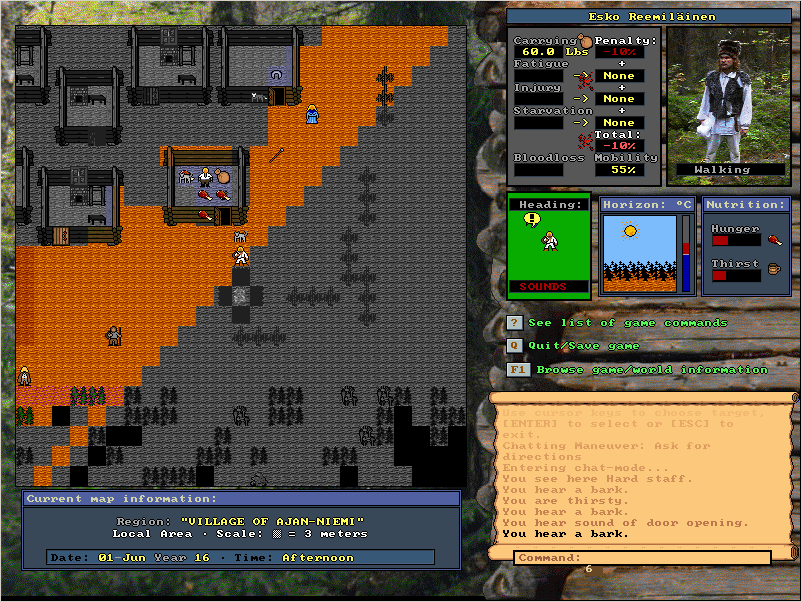
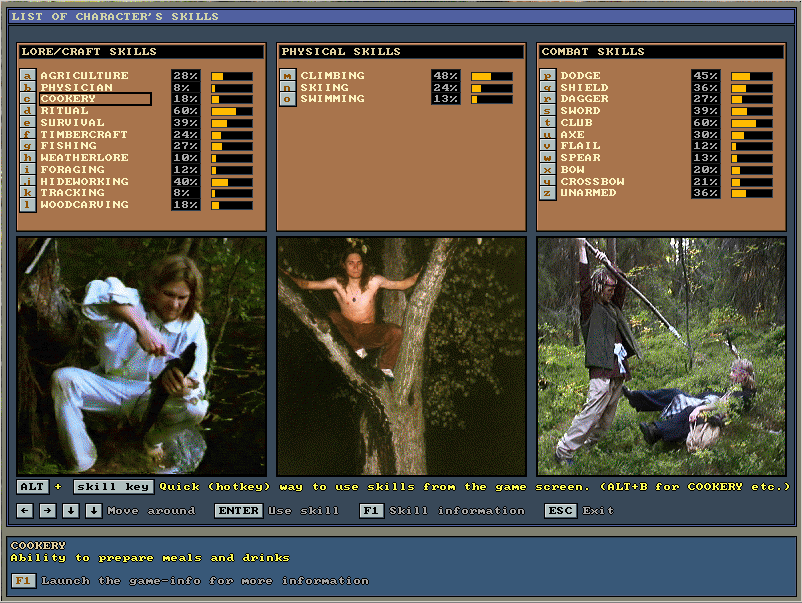
2007Versions 3.00 - 3.04--RRR---R-RWith version 3.00 started the third era of UnReal World. Many elements of the world generation were completely re-written or at least heavily improved. Everything related to landscape became bigger, better, faster and more beautiful. So became completely re-written random world generator, enchanched zoomed-in terrain generation, flora overhaul and map structure overhaul. A fundamental chance from map structure overhaul was that the world became completely seamless; it was now possible to explore the whole world on zoomed-in level. All the mushrooms, wild edible plants and berries were completely re-arranged and re-written, and a bunch of new flora appeared. The new random world generator allowed to create a map from three different regions of the world: Inland, Northern or Archipelago. Cultural areas were also generated on the map for the player to view. Almost all the screens, menus and graphics were re-organized and redrawn. 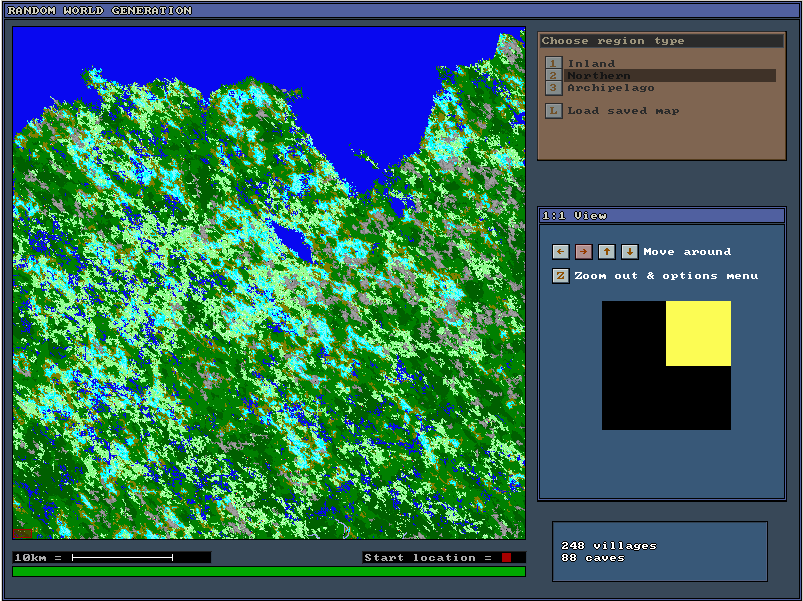

2008Versions 3.04(2) - 3.11R--RRR--RR-Major external and internal chances -- a record-breaking year in number of releases. As new (SDL) era of UrW now allowed system and hardware independent user interface/audiovisual design and lots of effort was put into giving the game a new outlook and facelift. Almost all the menus and game-screens were renewed and made mouse sensitive. Tile-graphics engine was overhauled and majority of the tiles were re-drawn now featuring overlapping. Big crafting improvements were also made featuring more complex usage of raw materials and automatic selection of tools - of which some now were better suited for only certain tasks. A detailed "required items" dialog was also added. Crafting became far more complex, flexible and fun. NPC and animal AI improvements were started and chat-system was overhauled. NPCs now chopped down trees, maintained fire and had became aware of events in the world - also telling their news to the player character. 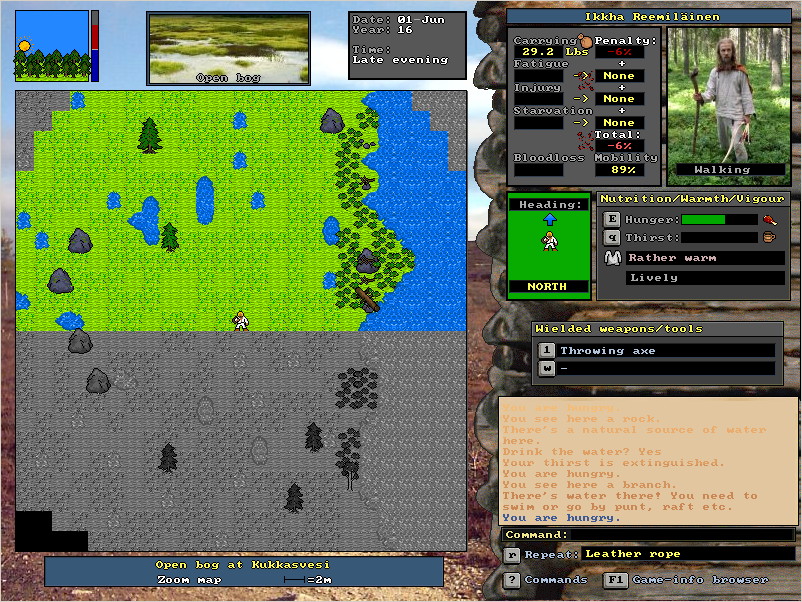
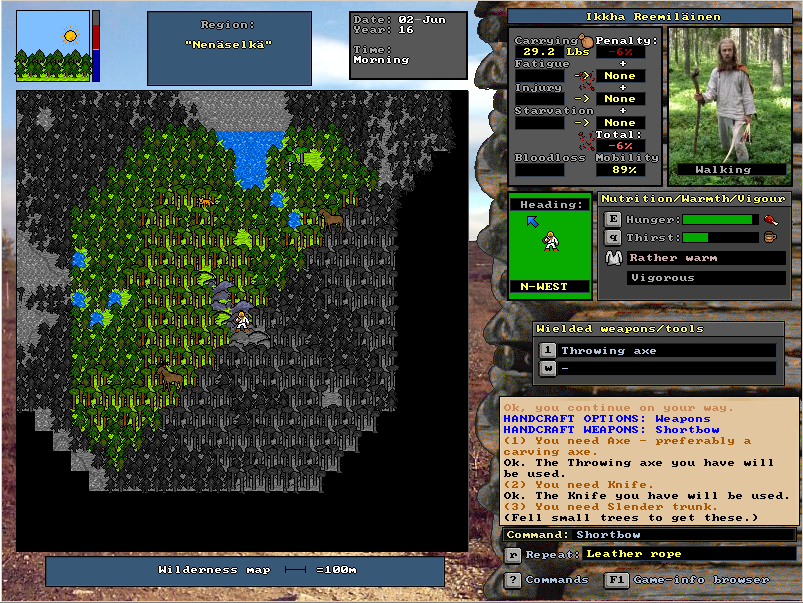
2009Version 3.12b----------RA brave new unreal world - complete rewrite of random world and zoomed-in terrain generation. This was a monumental task and saved nothing from only recently (2 years ago) updated world & terrain generation code. The new world appeared six times larger than previously and contained the whole, seamless UnReal World peninsula. Lots of new terrain types were added and also terrain elevation. Graphics, diversity and overall generation of zoomed-in maps were also rewritten. The facts of life stayed the same, but the landscape changed immersely. This was one of the biggest core element overhauls in history of the game, and required also lots of new tile design. 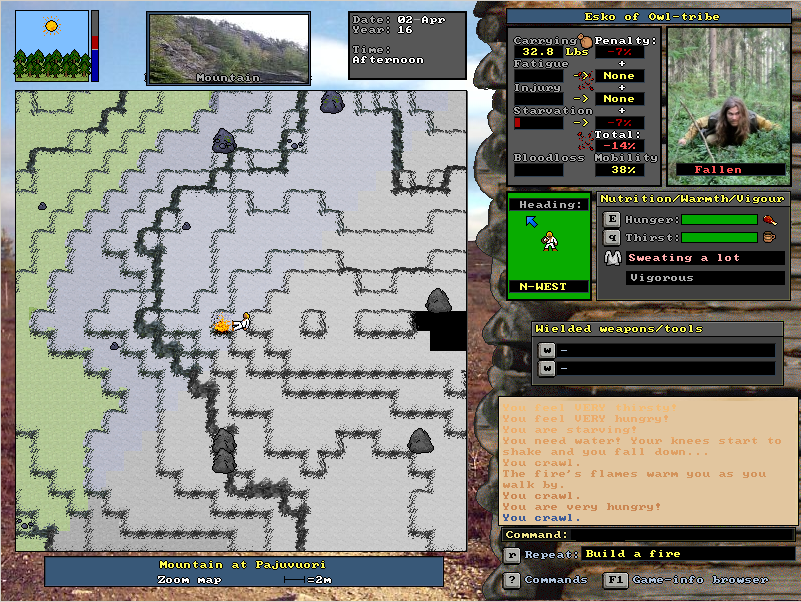
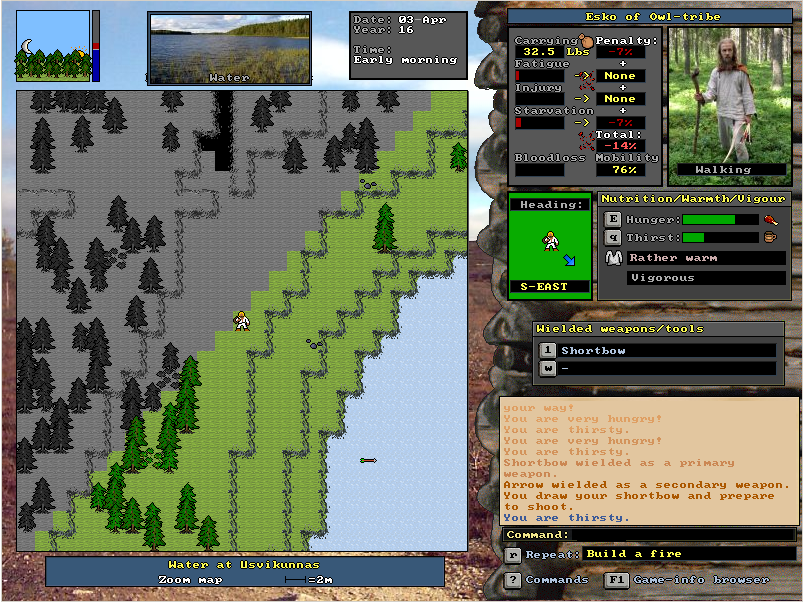
2010Versions 3.12 - 3.13-patch1----R-----RIntroduction of modding capabilities. Through (once more) fundamental data structure changes it was made possible to mod plants, do-it-yourself items, build-it-yourself constructions and cookery recipes. Flora of UnReal World was also improved in many ways featuring medicinal (herbal) effects and lots of new cultivated and wild plants. Importance and details of agriculture were greatly improved as separate harvest, thresh and grind options appeared allowing more complex usage of plants. Many improvements focused on ways to better utilize plants and raw materials. A new style for modeling nutrition was introduced; the system was based on carbohydrate, protein and fat content in all the edible items. Cookery became very freeform and used ingredients determined nutritional value of the meal prepared. 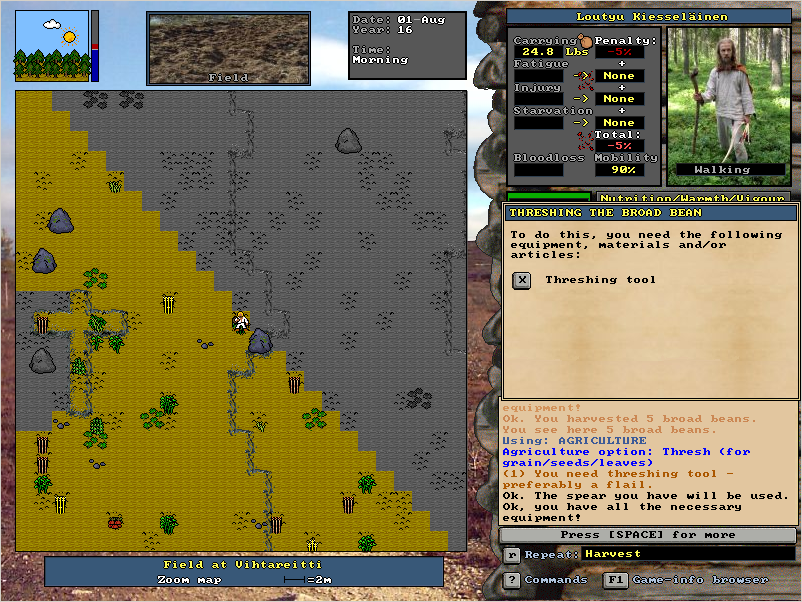
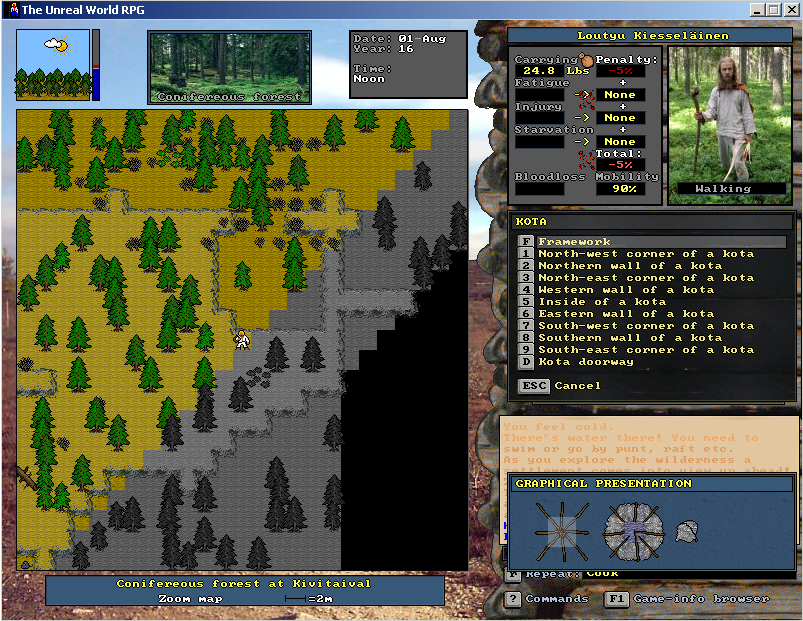
2011Versions 3.13-patch2 - 3.14bR-R--R----RMany recently started major development branches are being improved simultaneously. Nutrition system is expanded to affect character's feeling of hunger based on energy intake, stomach content and bodily energy reserves. Modding capabilities are improved step-by-step allowing more complex mods to be created. Script language is created to allow editing game messages. Porting the game for Linux and MacOSX was started and partially accomplished - the first unofficial ports were playable but very buggy. One big game element which hadn't been touched for a long time was combat. Now it was massively overhauled including rewritten melee and missile combat mechanics, combat messages, wound system and wound treatment. 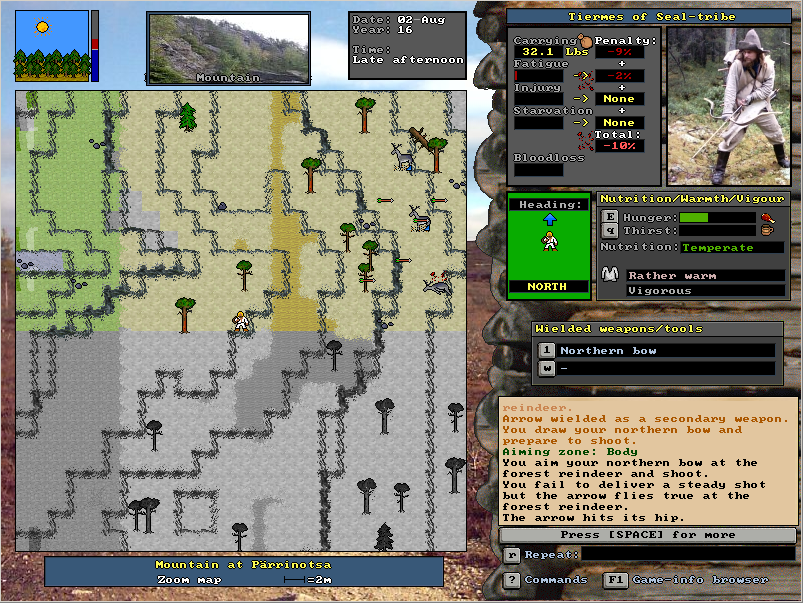
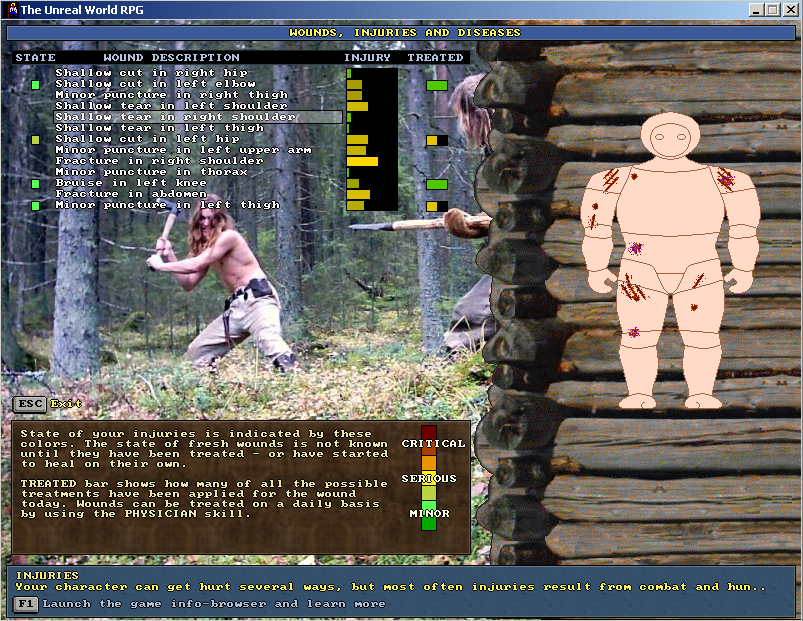
2012Versions 3.14b2-3.15RR-----R-RSeveral fundamental overhauls concerning items and crafting. All the items become prone to quality tags and crafting is brought to a desired level of detail and complexity. Raw materials, tool quality/usefulness and skill mastery level now all play together in advanced manner and have an impact on produced item quality. Item prices are adjusted with the help of historical sources and NPC equipment is assessed based on wealth of their culture. Impact of skill mastery level is overhauled and starts to affect everything produced with character's skills; crafting, cooking, building and so on. Tracking gets more realistic and skill dependant. And flora of the world just keeps getting more detailed and diverse. New plant properties and medicinal effects are added, and utilizing young sprouts and roots is featured. HERBLORE skill is added to cope with the hidden world of the plants and to recognize and study their properties. Porting the game to Linux and OS X reaches stable stage. 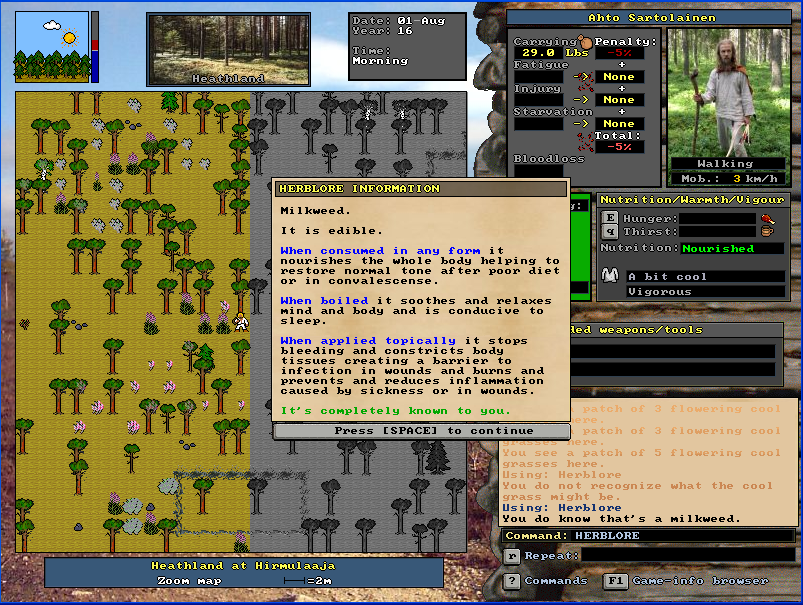
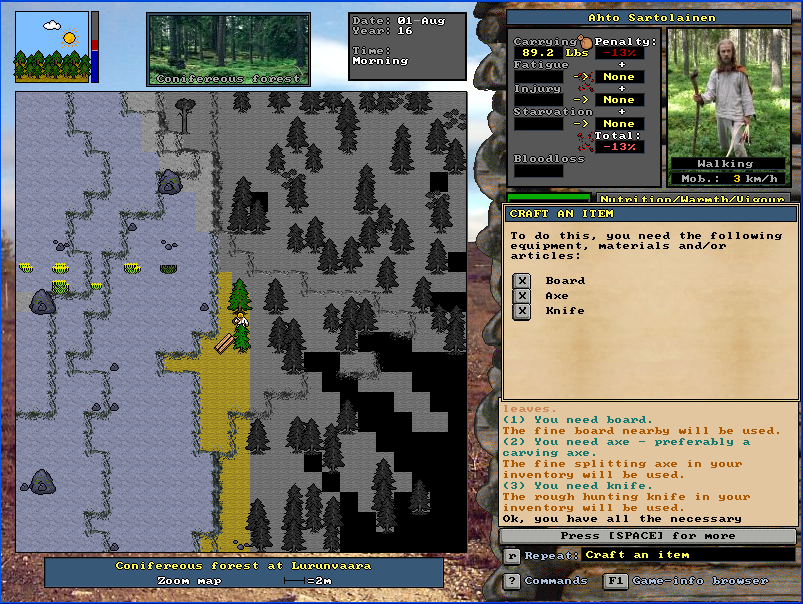
2013Versions 3.15-patch1 - 3.18b3RRRR---R---RA record-breaking year in both number of releases and far reaching overhauls. Village inventory and restocking, item ownership and trading, reputation and reacting to breaches, NPC speech and communal AI - these all are redesigned or created from a scratch. Shop-like storehouses where you purchased the goods from a craftsman were removed and the new era of trading and restocking begun. Goods in each village are now owned by the whole community and you collect the items from different buildings and start trading when ready. Village restocking gets more varied, detailed and population dependant. Species specific diets, predator-prey relationship and feeding behaviour of animals is created. Gregarious animals work as a herd, following their leader. Herbivores (and omnivores) search and eat variety of plants specific to their diet. Carnivores actively search, hunt, kill and eat their prey. A countless variety of incidents can happen as wildlife gets truly alive. A new item selection dialog is designed to allow easier selection and viewing of items. UI convenience boost is also added for handling items. Overall graphics facelift is initiated by replacing grainy old portraits and backgrounds with fresh and crisp images. And living in UnReal World in general gets more hardcore as all physical activities are given individual levels of effort and the character needs to meet specific physical condition requirements to perform certain tasks. The game became free to play donationware. 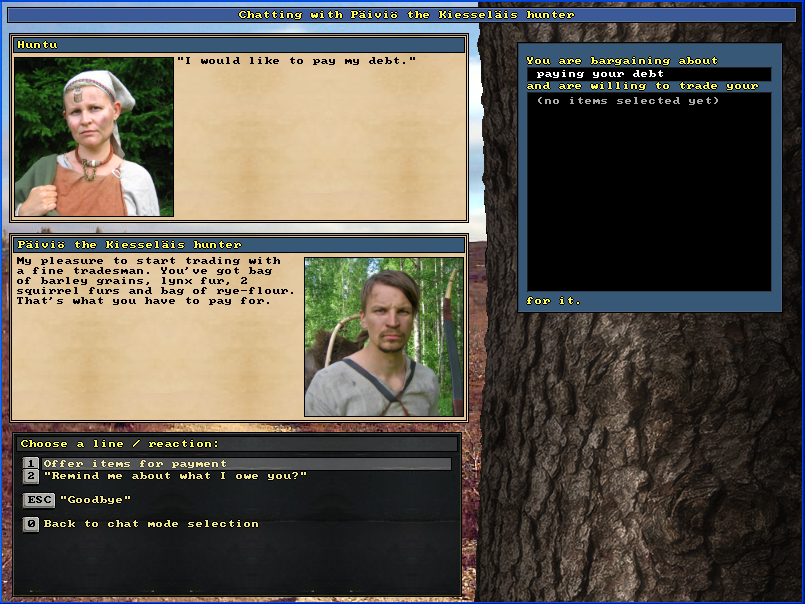
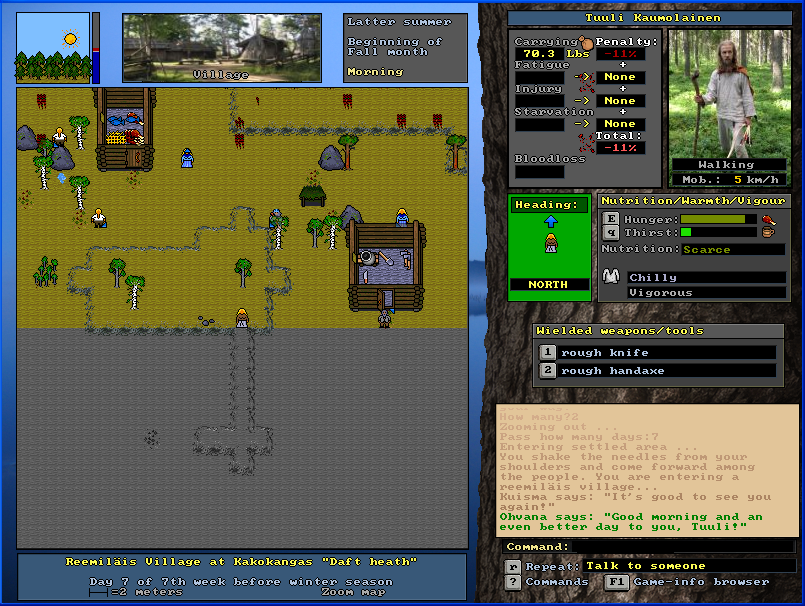
2014Versions 3.18-beta4 - 3.20RR------R--RThe facelift got completed with a galore of new high-quality backgrounds, portraits and terrain type images. By the end of the year the game was also migrated to SDL 2 and foundation for future graphic updates to follow was thus laid. But as always, development priority remained in the game content, and expanding possibilities and improving mechansims of wildlife, village life and NPC behaviour received the most attention. NPCs got a wider scope of reactions towards other people - in addition to being blunt aggressive or peaceful - and got closer to behaviour variety already in use with wild animals. Most notably, Njerpez lost their 'always aggressive' status. True crop cycle was added and villagers started to harvest their fields, stock the products and sow the fields again in the spring. Village resources and restocking was ever improved by adding more variety to availability of everyday tools and materials. Lots of love was given to combat means and rules. Complex weapon breakage and degrade system was created, shield holding modes were added to allow usage of shield to protect from missile attacks - and robber NPCs were introduced. Armour glossary was overhauled for the sake of historical accuracy and variety. One very important core element adjustment concerned the creation of animal populations. Animal populations were thoroughly overhauled and checked resulting in more varied and greater number of wildlife to exist in the world - with animals natural habitats having a much greater role than ever before. Ravens, eagle owls, goshawks and more birds now appeared - with their specific diets, nesting habits, eggs and feathers. And finally, seals were introduced. In august 2014 UnReal World also entered Steam Greenlight. The pressure to go for it had been raising for years already and now we finally gave in and decided to give it a go. 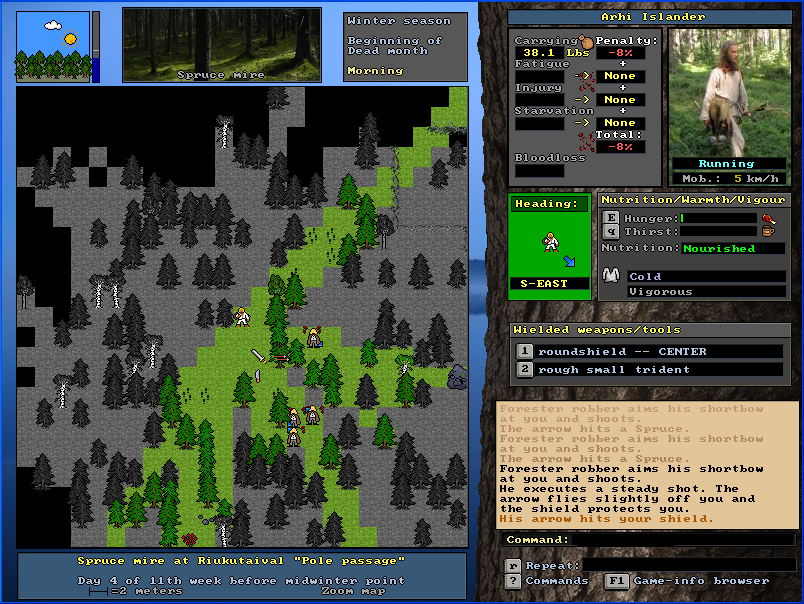
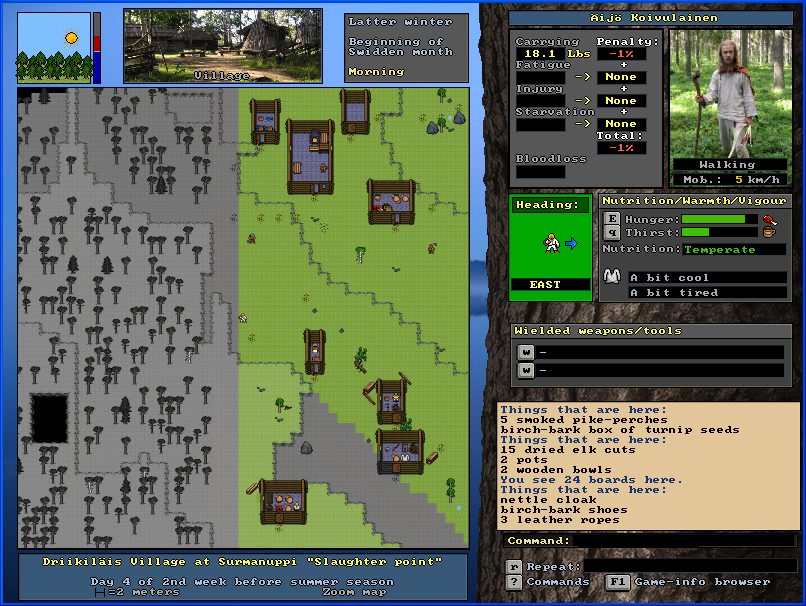
2015Versions 3.20 (patch 1) - 3.20 (patch 2)R-R---------Well, what do you know! UnReal World got greenlit on Steam at turn of the year. Votes and the buzz had made it pretty clear to expect approval on Steam, but now when it actually happened it still came as bit of a suprprise. Now this huge big sidetrack and a new arena to conquer had to be taken into account for real. But first things first... First quarter of the year was spent to release two crucial patches for the current version. These were most notably about finalizing SDL2 migration with further graphics tweaks and adding some great new hardcore value to trapping with balanced animal appearance. Map drawing was made texture-based by the book now looking better and rendering faster on all fronts. Straightforward animal spawning was removed and attractiveness of traps overhauled with more delicate system. Now it took more patience, consideration and knowledge of animals natural habitats to succeed in trapping. Then came the time to start planning, preparing and working on the next release - bearing in mind that it was going to be our initial Steam as well. Doors of the development chambers were shut and serious considerations of the next big things were initiated. We decided not to release on Steam as soon as possible but to start working on a brand new version with big and ambitious additions in both outlook and content. Thus, we started working on the great four content blocks; quests, complete tile graphics update, true moddability of items and weather engine overhaul. All of these were worked on intensely for the year 2015 and were all found semi-finished at the end of the year. Quite a feat, but nothing was ready to be released as a whole. Nevertheless, by the end of the year we had also gotten a grip of Steam interface and felt confident to go live next year with whatever of the leading content blocks were finished first. 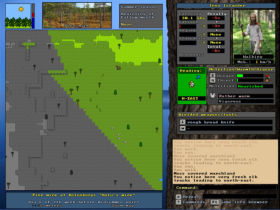


2016Versions 3.30 - 3.40 (beta 3)-RR-R----RRRA big, busy and productive year filled with groundbreaking releases and all sorts of acknowledgements. Firstly, with release of version 3.30 we launched on Steam. It was 11 month journey to come up with the release and we managed complete 3 out of those 4 big development blocks that were started last year. There was a huge tile graphics overhaul. Hundreds of redrawn tiles gave the game a whole new outlook, and rewritten graphics engine brought the performance boost. The weather engine was rewritten from a scratch now featuring the craved realism of simulating factors such as rain, snowfall, ice, solar elevation angle and temperature changes. More precise moddability of crafted and cooked items was introduced by adding item property tags to truly create new, customized items. Six months and two patches later another big release took place; version 3.40 (beta) with quests finally ready to be released. Quests were probably one of the biggest implementations in years, spanning their effects on ever so many sectors of the game. We didn't take the easiest path with quests but approached them with great ambition, used verbose dialogue, procedural generation and randomization to maintain replayability. Lots of folklore and history books were studied to get the quests featured in satisfying fashion and that lead us to enhancing the spirit world as well. New spells were introduced, based very accurately on actual collected fishing and hunting spells of the ancient Finns. Now it was also possible to meet and see the spirits for real. The game world became more alive in a new fashion on both mundane and extraordinary levels. Meanwhile, there was Finnish Museum of Games about to open at turn of the year and UnReal World was selected as one of the featured titles. Doing our part in the process of exhibition building up was quite interesting; along with playable version, some game (development) items and video interview also appears at UnReal World booth at the museum. UnReal World also got Guinness World Record for "Longest update support for a game" title, after 24 years of continuous development (so far). 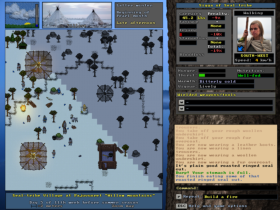
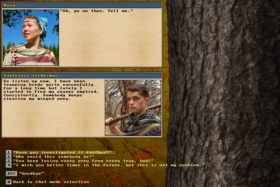
2017Versions 3.40 - 3.50 (beta 2)--R--------R25th anniversary year of versatile productivity. In addition to new versions there was also launching of new forums, adding Steam trading cards, and publishing Shaman Duel short movie. And finally, taking part of special year of celebration. See, in 2017 Finland celebrated 100 years of independency, and UnReal World celebrated 25 years of indie-dependency. But starting from the start...the major new additions added in 2016 - especially the quests - needed certain amount of adjustments, discussion and community guidance but all this was nicely worked out in the early year and 3.40 stable released. Soon after, considerations about adding Steam Trading cards were initiated in collaboration with by Finnish comic artist Tuuli Hypen - who had done some remarkable UnReal World adventuring and fan-art in the past. The process of artwork creation continued for six months - from discussions about possible scene selections, to early sketches, and final set of cards and backgrounds which were proudly released in august. Meanwhile, we had started steadily trucking towards yet another version with a strong focus on the new kind of spells and spells system first showcased in version 3.40. This meaned giving up the old ritual system for good, and bringing the existence of magic means to our desired new level. The new version was not all about the spells though. In the midst of (still) adjusting quests one new quest, with an important new otherworldly being, got added too: the appearance of forest spirit. We also brought into existence cubs and calves - the young animals for relevant wild animal species. Now you could encounter an elk mother wandering together with her calf, or a bear mother followed by her cub. This addition extended also to adjusted behavior of mother animals. Long-awaited new materials to be harvested from carcesses - antlers, bones, skulls and teeth - were also added. With some of these, eg. bear skulls and teeth, there was also a strong underlying link to new spells. This version was not ready until december, but we were able to release beta just in time before Finland's 100th independency day. Steam honoured the special occasion with designated sale of some Finnish titles and we were proud to participate. UnReal World is naturally quite a finnish game, but also the longest-living of them all. 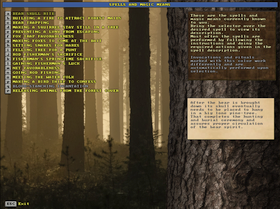
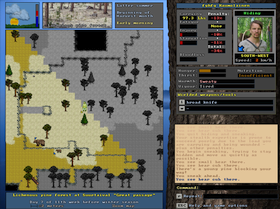
2018Versions 3.50 - 3.52--R--R---R--The early year brought version 3.50 to stable stage, which was then followed by another two new versions. All of these releases contained more bugfixes and balancing rather than completely new features. The two latest and greatest things achieved, quests and new spells system, still needed most of our attention and lots of fine tuning was done on interacting with both the spirits and NPCs. The actual new features that were added, although in small numbers, also further enhanced dealing with the spirit world and NPCs - and pets and companions. With a quarter of a century of development behind an interesting new merit was also given for the game as UnReal World was now seen as a true forefather of its genre. See, Back in 2016 we got Guinness World Record for "Longest update support for a videogame", and you know what... this year we got another one as Guinness World Records Gamer's Edition 2019 acknowledged UnReal World as "First open-world survival videogame". 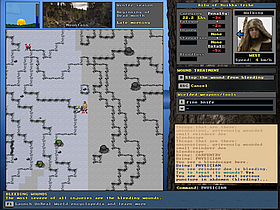
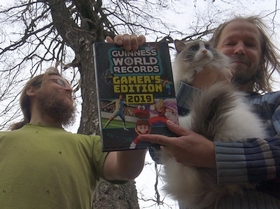
2019Versions 3.60 - 3.61--------RRRRFirst months the year were spent exceptionally - in sick leave due to fractured shoulder. The recovery was slow with lots of physiotherapy needed, but I dedicated myself to work on both the arm as well the game as much possible. And the both plans turned out just fine. The main focus of the next release was set to improve NPCs and their behaviour and widen the range of their actions, including the companions you can hire for yourself. The most fundamental and also very practical addition was to make NPCs who roam the woods now actively hunt game animals based on their cultural preferences. Naturally the need of NPCs being able also to butcher and utilize their kills followed, along with many more painful and complex tweaks to NPC code to make their existence in the world more meaningful. The new NPC hunting related code was leashed to benefit player's party as well as the companion commands were also enchanced with options to utilize carcasses. Companions were also given completely new mechanics to help player character with numerous laborous tasks thus shortening the working times. From building to crafting and from retrieving nets to setting traps they would now spontaneously come and help. Items and crafting was extended too, with new materials and properties. Birch-bark items had existed in the game for ages but now birch-bark was introduced as harvestable raw material which could be utilized in many ways. Most fundamental additions were made in the world of tying equipment where measure of length property was featured. This change extended all around the code and brought up numerous related features like shortening and joining, and crafting requirement additions. And then came the withes - readily available natural tying equipment craftable from spruce and birch saplings. Releases started rolling in the autumn and lots playtime was needed to see how new features worked, or not worked. Towards the end of the year stable versions finally came out solid, good and strong. As did the injured arm. 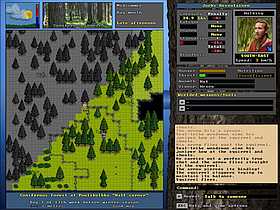
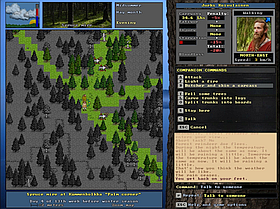
2020Versions 3.62 - 3.63--R---R-----Last year started with fractured shoulder, and this one with the outbreak of global pandemic. Extra hassle and worries appeared in most peoples daily lives and routines, but we still managed to release two new versions. It also came to our attention, by an e-mail from a player, that in february 2021 UnReal World had lasted 10,000 (ten thousand) days in real life. This was calculated from the date stamp in executable file of version 1.00b distribution archive. We don't even remember the exact release date, but it was summer of 1992. So the continuing lifespan of the game in early 2021 was at least 10,000 days - and the days and releases have kept rolling also after that. First release of the year was a bunch of miscellanous additions and bugfixes on all fronts. Few memorable things could be for example milking reindeers, pausable pit digging and possibility of Njerpez warriors wandering in groups. The second release had majority of its new features specifically related to the lush of the summer, with also significant amount of improvements to the fire mechanics. These kind of go hand in hand. Now you could build sauna stoves, and make a vasta broom for sauna bath, but also gradual heating up of fireplaces (including sauna stove) was introduced. With these fireplace related additions more attention to heating was now required to have your cottage nicely warm during the coldest winter days. With the new fire mechanics fire burning in general, its' warming effect, obtained information and visual appearance all became more detailed. For example, embers now accumulated and glowed according to the amount of fire burned and information about the burnt-out fire could be obtained by looking at it. And so on. The smoking cookery method for food preservation was also made more realistic requiring continuous maintaining of fire through the whole process. When it comes to the lush of summer it was also seen in the addition of leaf trees growing and losing their leaves gradually according to the season. This was mostly a visual enhancement but also had some use in the game-mechanics for example when collecting birch twigs. See, you need leafy summer twigs to make a vasta broom. The sauna experience also got a bit more moody with new audio and messages. 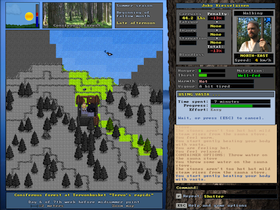
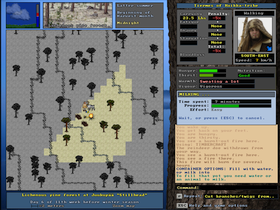
2021Versions 3.70 - 3.71
-----RR--RR- |